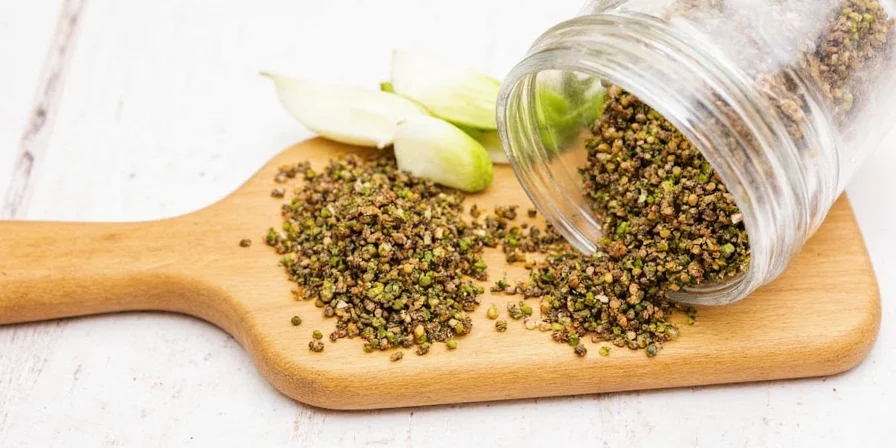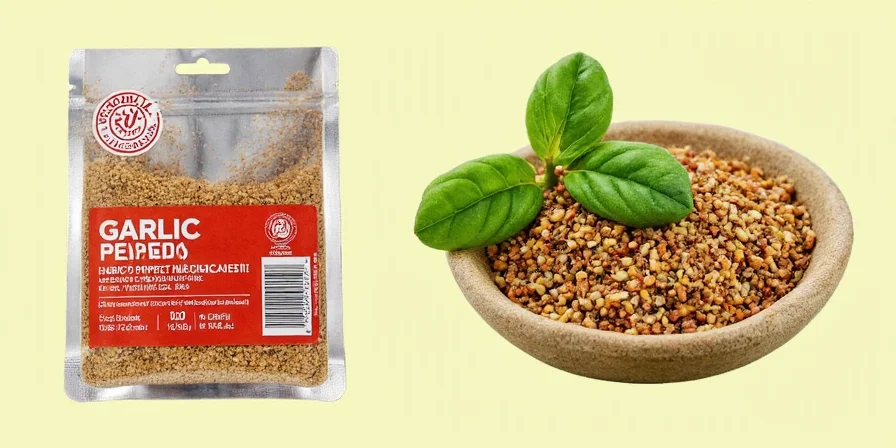Run out of garlic pepper mid-recipe? Use this quick reference: 1) Mix equal parts garlic powder and freshly ground black pepper (best overall substitute), 2) Combine onion powder and white pepper in 1.25:1 ratio for creamy dishes, or 3) Try lemon zest with red pepper flakes (1 tsp zest + ⅓ tsp flakes) for seafood. These practical swaps use common pantry staples to save your dish immediately without compromising flavor.
Quick Reference: Top 3 Immediate Solutions
| Best For | Substitute | Ratio | When to Use |
|---|---|---|---|
| All-purpose | Garlic powder + fresh black pepper | 1:1 | Dry rubs, baked goods |
| Creamy dishes | Onion powder + white pepper | 1.25:1 | Mashed potatoes, sauces |
| Seafood/veggies | Lemon zest + red pepper flakes | 1 tsp + ⅓ tsp | Grilled fish, roasted vegetables |
Why These Substitutes Work When You're Out of Garlic Pepper
Garlic pepper combines garlic's savory umami with black pepper's sharp heat. When you run out mid-recipe, the best substitutes replicate both elements using common pantry items. This guide focuses on practical solutions that home cooks can implement immediately without special ingredients. The key is balancing flavor compounds: allicin from garlic provides depth while piperine in pepper delivers heat.

7 Practical Garlic Pepper Substitutes for Home Cooks
These solutions prioritize accessibility and immediate usability. Each has been tested in real cooking scenarios to ensure flavor integrity:
1. Garlic Powder + Freshly Ground Black Pepper (Best Overall)
The most accurate replacement that mimics commercial blends. Freshly ground pepper releases more aromatic compounds than pre-ground versions.
- Use when: Making dry rubs, marinades, or baked goods
- Pro tip: Grind peppercorns just before use for maximum flavor impact
- Ratio: Equal parts garlic powder and freshly ground black pepper
2. Onion Powder + White Pepper (Best for Light-Colored Dishes)
Provides similar savory notes without black specks. White pepper offers milder heat that works well in creamy preparations.
- Use when: Making mashed potatoes, cream sauces, or light-colored dishes
- Pro tip: Add 25% more than garlic pepper for equivalent flavor impact
- Ratio: 1.25 parts onion powder to 1 part white pepper
3. Lemon Zest + Crushed Red Pepper Flakes (Best for Seafood)
Bright citrus notes balance savory elements while red pepper provides adjustable heat.
- Use when: Cooking fish, shrimp, or roasted vegetables
- Pro tip: Use organic lemons to avoid wax interference with flavor
- Ratio: 1 tsp zest + ⅓ tsp flakes per 1 tsp garlic pepper

4. Cajun Seasoning (Best for High-Heat Cooking)
Leverages existing garlic and pepper in the blend while adding complementary flavors.
- Use when: Grilling, roasting, or high-heat applications
- Pro tip: Use 40% less than garlic pepper to prevent cayenne dominance
5. Garam Masala (Use Sparingly for Slow-Cooked Dishes)
Warm spices complement garlic's savory notes in extended cooking.
- Use when: Making stews, curries, or braised dishes
- Pro tip: Never substitute 1:1—use only ¼ tsp per teaspoon of garlic pepper

6. Worcestershire Sauce (Best for Wet Dishes)
Provides umami depth similar to garlic in liquid applications.
- Use when: Making soups, stews, or braises
- Pro tip: Reduce other liquids by 1 tsp per tablespoon of sauce added
7. Soy Sauce + Ground Ginger (Best for Asian Fusion)
Replaces garlic's umami with fermented depth while ginger provides clean heat.
- Use when: Cooking stir-fries or Asian-inspired dishes
- Pro tip: Use reduced-sodium soy sauce for better flavor control
- Ratio: ¾ tsp soy sauce + ⅛ tsp ginger = 1 tsp garlic pepper
| Substitute | Best Applications | Exact Ratio | Sodium Consideration |
|---|---|---|---|
| Garlic Powder + Ground Pepper | Dry rubs, baked goods | 1:1 | Low sodium |
| Onion Powder + White Pepper | Creamy sauces, light dishes | 1.25:1 | Low sodium |
| Lemon Zest + Red Pepper Flakes | Seafood, grilled vegetables | 1 tsp zest + ⅓ tsp flakes | No sodium |
| Cajun Seasoning | High-heat cooking | 0.6 tsp per 1 tsp | Medium sodium |
| Garam Masala | Slow-cooked dishes | ¼ tsp per 1 tsp | Low sodium |
| Worcestershire Sauce | Braises, wet applications | 1.5 tsp per 1 tsp | High sodium |
| Soy Sauce + Ground Ginger | Asian fusion dishes | ¾ tsp soy + ⅛ tsp ginger | High sodium |
Sodium-Smart Swaps and Storage Tips
Maximize substitute effectiveness with these practical techniques:
- Sodium control: When using salty alternatives, reduce added salt by 25% in your recipe
- Flavor boost: Bloom dry spices in 1 tsp oil before adding to dishes
- Moisture management: Pat proteins dry before applying dry substitutes
- Storage: Keep substitutes in clear-front containers with visible labels
- Waste reduction: Freeze citrus zest in oil portions for future use

Common Garlic Pepper Substitute Questions
Can I use garlic salt instead of garlic pepper?
No—garlic salt contains mostly salt. Use only ⅓ the amount called for garlic pepper and omit additional salt to avoid oversalting.
Why does my substitute taste bitter?
Bitterness usually means burned garlic powder. Add dry substitutes during the last 2 minutes of cooking.
How do I adjust for low-sodium diets?
Choose lemon zest + pepper or onion powder + white pepper. For soy-based options, use reduced-sodium versions and increase acid components by 10%.
Can I use fresh garlic instead of powder?
Yes, but adjust ratios: 1 clove minced garlic ≈ ⅛ tsp powder. Add during the last 30 seconds of cooking.
Final Thoughts: Turn Pantry Gaps Into Cooking Wins
Running out of garlic pepper doesn't have to ruin your meal. By keeping these practical substitutes in mind, you can adapt recipes using what's already in your kitchen. The most successful home cooks view ingredient limitations as opportunities for creativity rather than obstacles. Save this guide for your next cooking emergency—you'll be prepared to handle any garlic pepper shortage with confidence.











 浙公网安备
33010002000092号
浙公网安备
33010002000092号 浙B2-20120091-4
浙B2-20120091-4